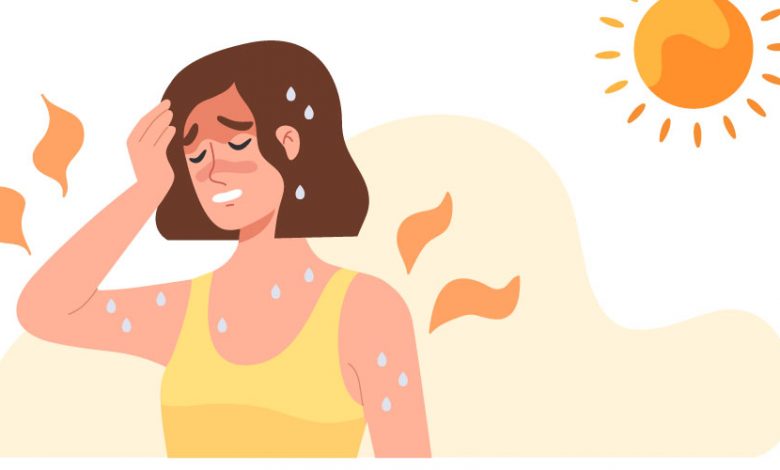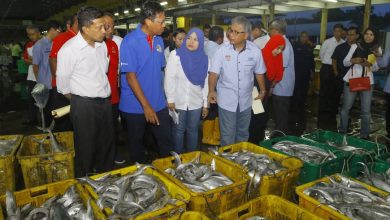

By: Rosli Mansor Ahmad Razali
We were recently shocked by the news of the death of a one-year-seven-month-old girl believed to be due to heat stroke.
The child known as Nur Imani, from Kampung Kota, Kelantan started coughing a week ago and experienced vomiting symptoms a few days after that.
According to the victim’s father, Ahmad Faris Fazli Mohd Nasir said the cause of death from the post-mortem was due to heat stroke. The water in the body was all dry, and the lungs have shrunk.
The story that happened above can be a reminder to all of us, not to take for granted the phenomenon of heat and dry waves that are hitting the country due to the monsoon transition and this situation is expected to continue until July 2023 in addition to also hitting other Asian countries including Thailand, Vietnam, China, India and Bangladesh.
Heat stroke is a serious condition due to exposure to extremely hot surroundings that causes the body to be unable to stabilize the body temperature and it occurs when the body temperature rises rapidly above 40°C (degrees Celsius) or more.
Heat stroke can occur suddenly or gradually.
Don’t take it lightly if your child complains of a headache after playing in the park.
Pay attention if your child’s face is red, his hands are cold, he feels dizzy and wants to vomit. This may be a sign that your child is suffering from a very life-threatening heat stroke.
MET Malaysia has previously issued a level 1 hot weather status (caution) with temperatures rising to 35-37°C, especially in the northern areas of the peninsula. Always monitor FB Met Malaysia to see the current weather situation in Malaysia.
The incidence rate of heat stroke is different depending on geographical factors, weather and the activities of the local population. The risk of heat stroke is high when the ambient temperature is above 39.2°C.
According to Medical Lecturer, Department of Community Medicine, School of Medical Sciences, Universiti Sains Malaysia (USM), Associate Professor Dr Nik Rosmawati Nik Husain, based on the ‘World Health Organization’ (WHO) 2023 report, the continuous heat wave phenomenon in Europe in the middle of 2022 has caused more than 20,000 deaths due to heat stroke.
“In Malaysia, 200 cases of heat-related illnesses have been reported, of which 22 were heat strokes. Therefore, active action should be taken to avoid the occurrence of heat-related diseases such as heat stroke,” she said.
Signs / Symptoms of Heat Stroke
The public needs to know the signs and symptoms of heat stroke so that immediate action can be taken. Among the signs of a person suffering from heat stroke are:
- the heart rate becomes fast and the patient will feel palpitations (normal heart rate: 60-100/minute).
- fast and short breathing (normal breathing rate: 12-20/minute).
- the body feels hot and dry.
- headache, dizziness and lightheadedness.
- feeling nauseous.
- sudden increase in body temperature up to 40°C or more (normal body temperature: 36.5°C to 37.5°C).
- decreased blood pressure (normal blood pressure: 120-140/60-80 mmHg).• unconsciousness, fainting or convulsions.
Preventive measures
The public also needs to know some important preventive measures to avoid heat stroke, namely:
- not doing activities under the scorching sun or in hot conditions for a long period.
- avoid physical activity when tired, hungry or excessively thirsty
- keep yourself hydrated by drinking three (3) to four (4) litres of plain water a day.
- Practice a healthy and balanced diet, wear loose and light clothing and heat protection such as a hat or umbrella.
- do not leave anyone in a vehicle parked in the hot sun.
- ensure sufficient ventilation or air conditioning if in the house or premises.
She also advised the public to immediately seek treatment at a nearby hospital or clinic if they have early signs of heat-related illness.
At Risk Group
Individuals who do activities or work in hot surroundings are identified as being at high risk, such as construction workers, farmers, security guards, police, soldiers, firefighters, operators of hot machinery, athletes and outdoor activities carried out under the scorching sun.
In addition, some vulnerable groups have also been identified to further increase the risk of heat stroke such as the elderly, children and individuals with chronic diseases.
Move the victim away from extreme sunlight to a covered or cool place.
- Cool the victim with a damp cloth or flush with cold water.
- Provide fresh air, aim the fan directly or fan the victim using a newspaper.
- If the victim is conscious, give a cool and fresh drink.
- Get medical help through the 999 line.
Hospital treatment:
- The victim will be checked for pulse rate, blood pressure, breathing rate and level of consciousness.
- If the victim suffers a shock, special treatment will be given.
- Blood investigations and other related investigations will be carried out if necessary.
Dangers / Complications of Heat Stroke
Heat stroke should not be taken lightly as it can cause serious complications.
Based on an article written by Bouchama et al. (2022), the short-term effects of sudden exposure to hot weather can result in injury to body cells, inflammation, blood clotting and bleeding in several important organs.
Heat stroke victims can experience long-term effects such as neurological problems, cardiovascular system and risk of death.
Always get the latest weather information from METMalaysia and related health warnings from the Ministry of Health Malaysia.


